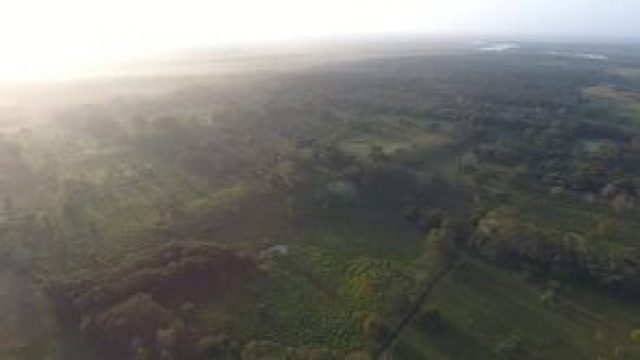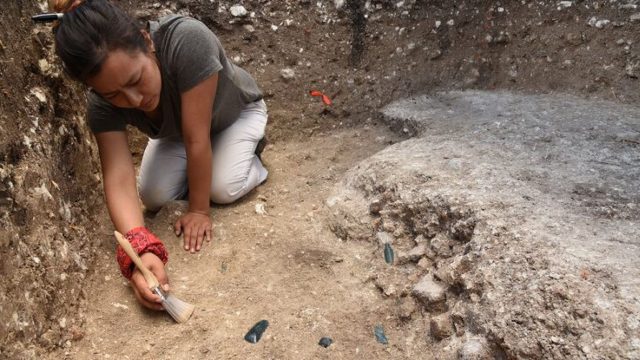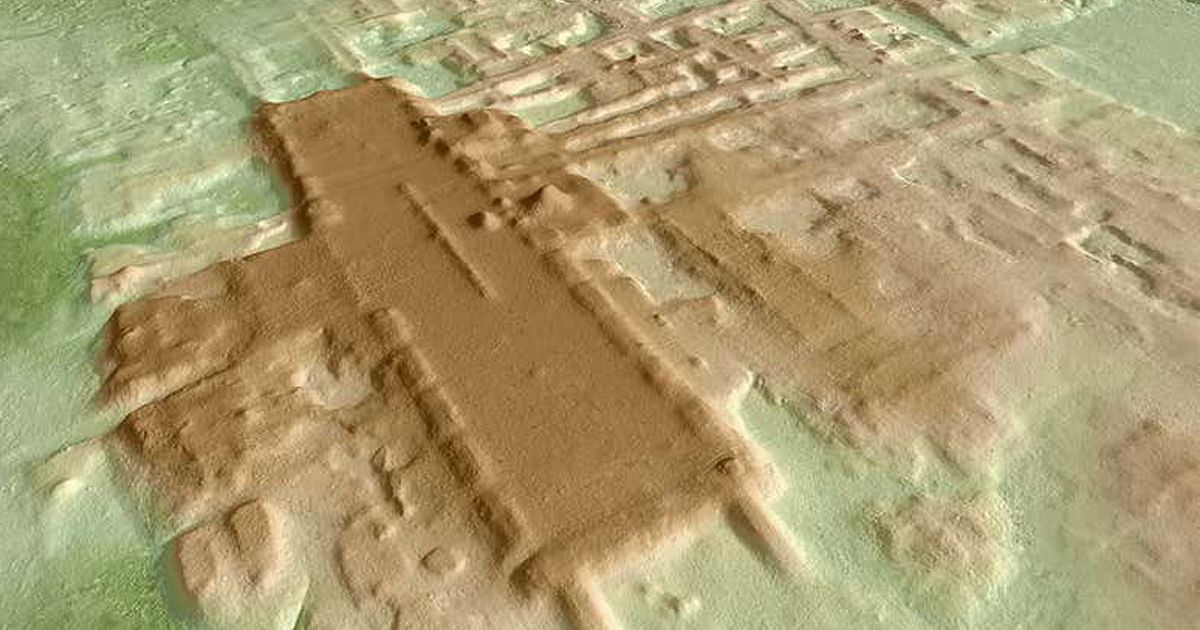Modern technology has helped to uncover the oldest, largest Maya monument ever located. Laser mapping is a technique that allows people to get a look at terrain that, for a variety of reasons, is hard to survey in person. LIDAR, or light detection and ranging, provides a way to remotely get detailed maps of areas that are, for example, covered by dense forest.
The technology is used in a number of fields, including archaeology, preventing the need for scientists to trek through remote areas in search of lost locations and treasures. In fact, it let scientists find the oldest, largest, Maya monument that has ever been discovered. Fox News recently reported on the discovery of Aguada Fenix, which was found near the border between Mexico and Guatemala. Scientists from the University of Arizona actually made the discovery in 2017, but have only just started sharing details of the find.
The scale of the structure is huge. It’s between 30-50 tall and 4.600 feet long. It also has nine causeways. Not only is it both the earliest and largest known Maya ceremonial site, it is so large that it actually takes up more ground than the Great Pyramid of Giza in Egypt.

The team looked at low-resolution LIDAR gathered by the Mexican government, and saw what looked like a huge plateau or platform. They looked at the area with high-resolution LIDAR, which not only confirmed the original site, but also revealed the large building. Interestingly, the area isn’t deep in the jungle, in fact, people even live in the area, but the site was so large and flat that it just looked like natural landscape. It wasn’t until they could get an overhead look with the LIDAR that it became clear it was an intentional shape.
After its initial discovery, archaeologists began excavating the site. As part of that process, they had 69 samples of charcoal carbon-dated, and the results showed that Aguada Fenix dates from between 1,000 to 800 BC. It’s believed that the platform was used as a ritual site, and the team found jade axes and other objects in the center of the area.

Takeshi Inomata, from the University of Arizona and the lead author of the paper that outlines the discovery, said that the rituals probably involved use of the causeways, all of which lead to the rectangular plaza, allowing large numbers of people to gather. Its probable purpose as a community gathering place was very likely what prompted its construction in the first place. Iomata and his team have published a paper on their findings in the journal Nature.
While later constructions, such as the famous pyramids, are made of stone, this monument is made of earth and clay. There weren’t any signs of statues of high-status individuals, either, which suggests that the Maya culture was more communal earlier in its history, only developing into a more hierarchical society later in its development.
The Mayans were a Mesoamerican civilization that encompassed several indigenous cultures from Mexico and Central America before the Spanish came in the 16th century. They were never a united empire, but rather the civilization was made of a number of city-states across Belize, Mexico, El Salvador, Guatemala, and Honduras.
Different city-states fought or made alliances at different points of time, but all shared certain commonalities, including a great deal of skill in both medicine and astronomy, and a complex calendar. In the early Maya period, when this structure was built, the civilization was largely agricultural, growing cassava (manioc), maize, squash, and beans.
Related Article: Untouched Mayan “Jaguar God” Ritual Cave Found Full of Precious Relics
That was around the same time that the Olmec civilization was really coming into its own, and the Mayans adopted certain cultural and religious traits, as well as their calendar and system for numbers, from the Olmec, which may have stimulated the shifts in Mayan society.
